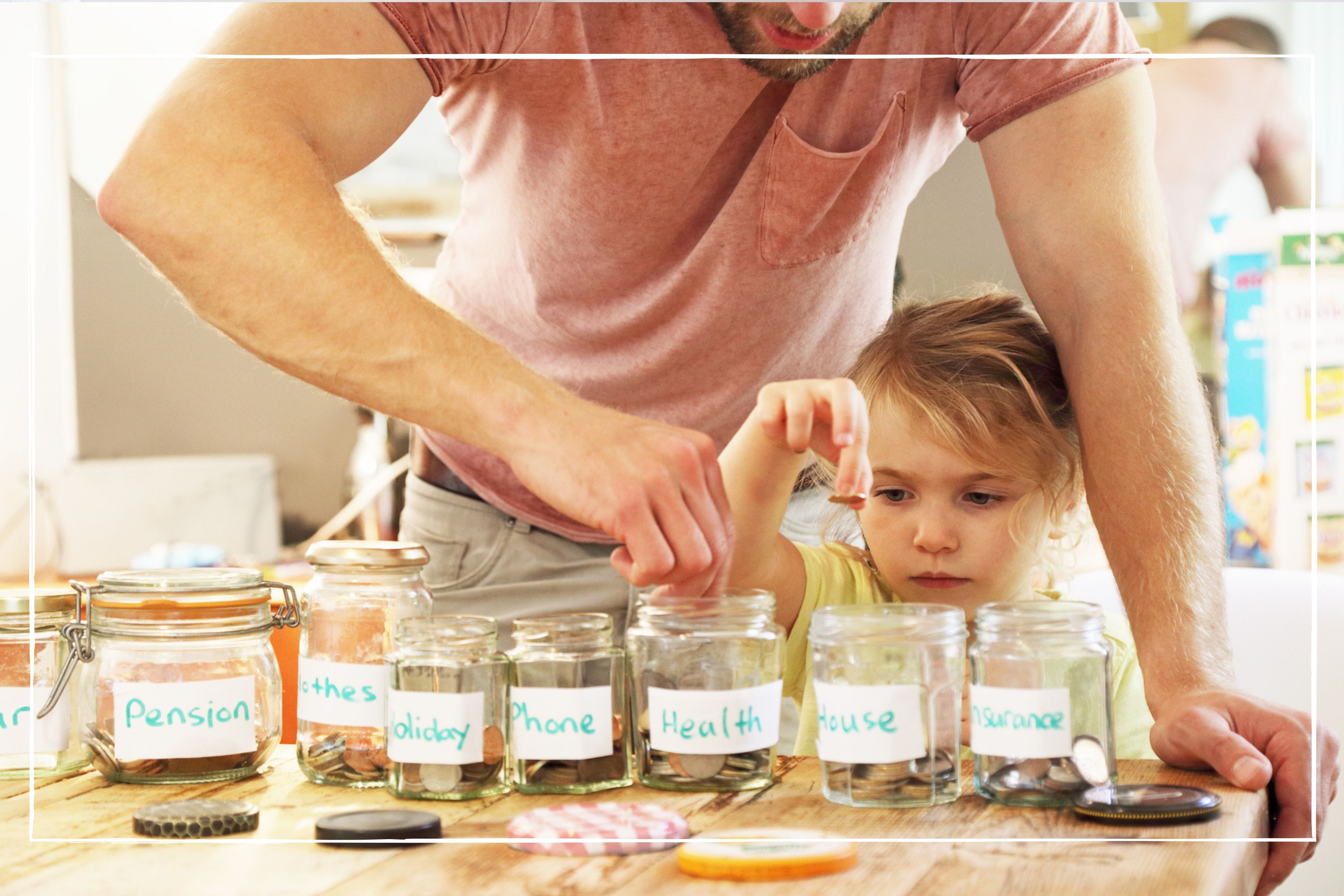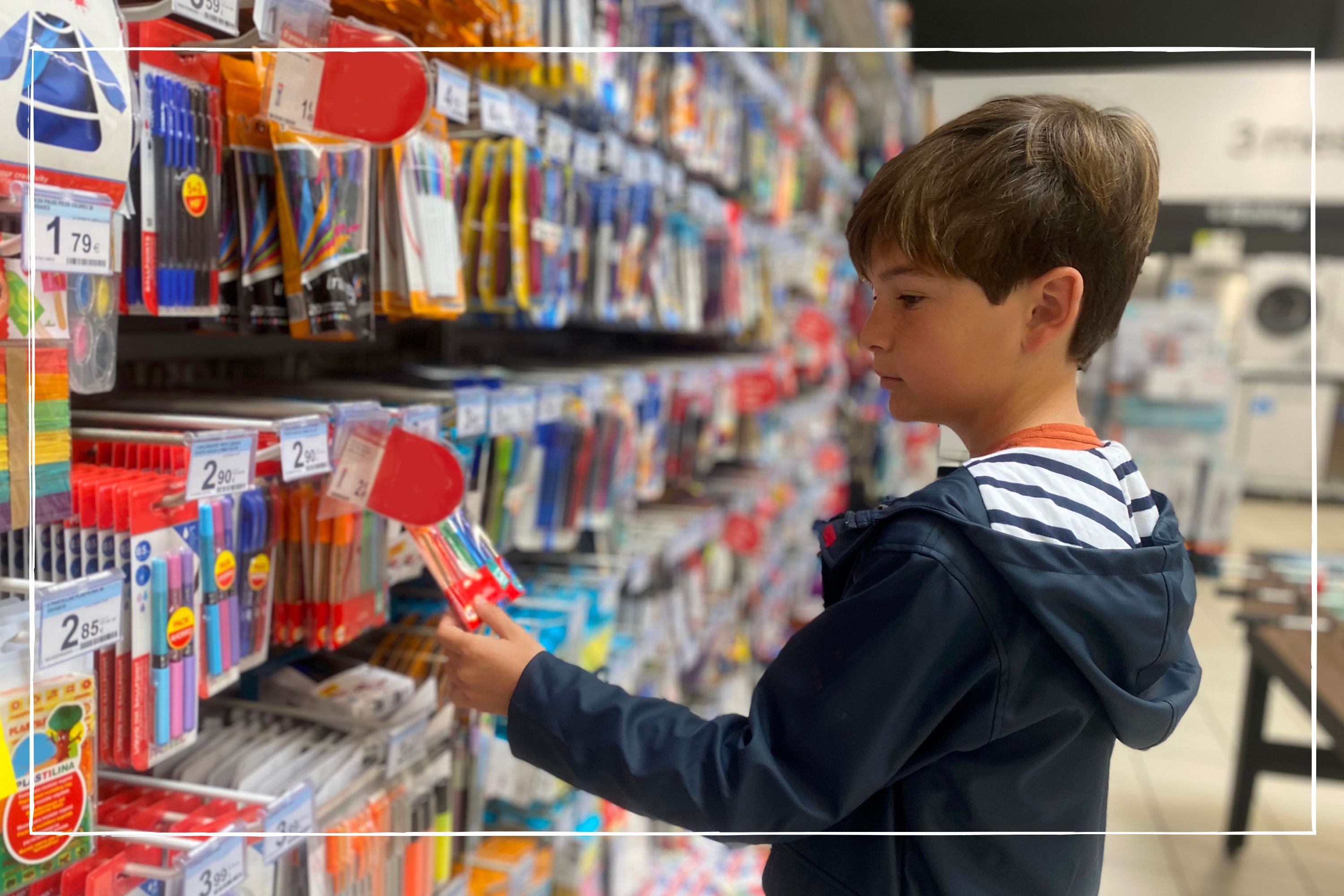What is cash stuffing and is it a good way of budgeting? We look at this viral TikTok craze
This TikTok trend has gone viral, but what is cash stuffing and should you jump on the bandwaggon?

A new budgeting trend has gone viral on TikTok, but what is cash stuffing and it it a good idea?
Understanding what budgeting is and how it works has never been more important. At a time where prices are rising all around, families are searching for ways to avoid overspending where they can. This might be switching to the cheapest supermarket, looking for ways to save energy at home, or hacks to save on the cost of food shopping.
And to help people learn how to save money, a TikTok trend called cash stuffing has emerged within the mum community - it's been viewed over four hundred million times.
Adam French, Personal Finance Editor at our sister brand The Money Edit, said: "Cash stuffing is a new spin on old budgeting techniques our parents and grandparents will be all too familiar with, like stashing money for different expenses in old jam jars.
"It’s important to find a budgeting technique that works for you - so if you’re struggling to set a budget and stick to it, cash stuffing could be worth giving a go.”
What is cash stuffing?
Cash stuffing, also referred to as the ‘cash envelope system’, is a way of budgeting with physical cash. You work out the different categories you want to budget for and put the cash for these into different envelopes. All of these envelopes are together in a wallet. It’s almost like a folder of mini budgets that is meant to help manage your money.
You can have one envelope for your weekly food shop, another for fuel and even your bills.
GoodtoKnow Newsletter
Parenting advice, hot topics, best buys and family finance tips delivered straight to your inbox.
What’s been popular amongst mums on TikTok is having multiple wallets to separate their categories even further. For example, one wallet may be dedicated to variable expenses such as that weekly food shop and transport, then another wallet for fixed expenses, such as your direct debits or household bills that go out every month.
Some mums have gone even further with a separate wallet which consists of envelopes with their kids' names on. This could be for their pocket money or saving for them generally, or even getting a head start on saving for Christmas.
There are several reasons people are cash stuffing. They find that the visualisation of physical money is a better way to manage their money and can help prevent impulsive buying. With physical cash, you know that once the money is spent, there is no extra pot (or overdraft) to dip into.
How does cash stuffing work?
If you want to try this cash stuffing trend, there are a few steps you'll need to follow.
Establish your budget
The first step is to understand how much money you want to cash stuff with. If you pay a lot of bills directly out of your bank account, then you might only want to try the envelope system for things that you would and could pay for in cash, such as your food shop, in-person shopping and paying for kids' entertainment or pocket money.
You might decide to set your budget weekly or monthly. Make sure you choose the method that works best for you and your family.
@lisawooders ♬ original sound - Mum who budgets
When working out your overall cash stuffing budget, it's best not to follow how another person or a TikToker sets their budget, as this varies for every household depending on income and expenses.
Choose your categories
After a budget is set, you need to decide what categories you want to split your budget across. Start with two or three to test if this method works for you before adding too many envelopes to your system.
@shes.on.a.budget ♬ original sound - She’s On A Budget
Set mini budgets for your categories
Now budget even further. Split your money between the categories you have based on what your overall budget is.
For example, if you have £100 that you want to cash stuff with, and have the categories entertainment, clothes and Christmas savings, you could divide the £100 as follows:
£50 for entertainment
£30 for clothes
£20 for your Christmas savings.
This is just an example and would be divided differently for each household. You might even find that during school holidays, you want to put more money in the entertainment wallet, and put more into Christmas savings as we get further into winter.
It’s time to cash stuff into envelopes
At this point, you’re ready to start cash stuffing. This means taking out the cash and filling your envelopes.
Depending on if you cash stuff weekly or monthly, at the end of each you should review what went well and what didn’t. This will help you change your method for the following week/month.
@budgetqueenuk ♬ original sound - Savysaver1234
While cash stuffing may work for some, you may decide that it's not right for you and your family. Personal finance expert John Fitzsimons said: "I can see the appeal of cash stuffing. It's a visceral way of budgeting, you can see exactly how much you have to spend on each of the various categories, and there will be some people for whom it is really effective.
"I'm not convinced it's a particularly practical option for everyone though. Not only can the process of managing those different envelopes be quite torturous, but you also miss out on the benefits of shopping in other ways - earning cashback when shopping online for example, or building up rewards when spending with the right credit card."
Other ways to budget
You can budget in all sorts of ways, but not all will work for you. Here are some options on ways to budget, if you find one doesn’t work, try another.
Take advantage of free budgeting tools online: When looking after your money, the last thing you want to do is spend on a website or an app that tells you how to budget. There are loads of free tools out there to help you like this one from Citizens Advice, StepChange's money handling advice and Money Helper's free budgeting calculator.
Free money saving apps: Take a look at some of the free money-saving apps that are available. These can be a really good way to budget ‘on the go’ and, as we all tend to take our phones with us everywhere we go, you can check on and refer to your budget whenever you need to.
John Fitzsimons says: "There are dedicated, standalone budgeting apps which can help, but many banks now offer budgeting tools within their own apps too. This method has the same controlling effect that you get from cash stuffing, but without the limiting impact that comes from only dealing in cash."
Try Hyperjar and Emma, or the tools from your own bank as a starting point.
Is cash stuffing worth it?
Cash stuffing definitely has its pros and cons, but ultimately it depends on what you prefer and how you like to manage your money.
For those of you on the go, cash stuffing doesn’t seem like the right option. Imagine the time it will take to go to an ATM, get the cash out and then sit there and put them into wallets.
Then there’s the issue of how much the ATM allows you to take out, on the assumption that there’s a limit. That would mean multiple trips to the ATM.
Not forgetting the fact that you have to go back to the bank to cash this money, if you’re cash stuffing for your direct debits/fixed expenses.
If you feel you do have a little time, it could be effective in helping you manage your money when it comes to saving for Christmas or weekly food shops.
Vaishali is a journalism graduate who has experience working with the likes of Leicester Mercury, Inews and The Week. She also comes from a marketing background, where she has done copywriting and content creation for businesses. Currently, writing about all things personal finance, Vaishali is passionate about finding the best deals around, whether it's the best credit cards or the cheapest personal loans, as well as sharing top money hacks to help people save and better manage their money.
-
 How to save money: 28 family-friendly money-saving tips for mums and dads
How to save money: 28 family-friendly money-saving tips for mums and dadsUnderstanding how to save money is key to limiting the impact of rising costs as much as possible
By Sarah Handley
-
 14 hidden benefits of your Amazon Prime membership
14 hidden benefits of your Amazon Prime membershipWe reveal the less-obvious perks of a Prime membership that will help you get the most value out of your subscription fee
By Rachel Wait
-
 14 surprising ways to spend your Tesco Clubcard vouchers - from restaurants and cinema passes to mini breaks and Disney+
14 surprising ways to spend your Tesco Clubcard vouchers - from restaurants and cinema passes to mini breaks and Disney+Tesco Clubcard vouchers can help you cut the cost of everything from groceries and travel to days out and cinema tickets
By Heidi Scrimgeour
-
 How to get Disney+ for free and save up to £79.90 a year
How to get Disney+ for free and save up to £79.90 a yearEven though the streaming giant ended its free trial offering, there are still multiple ways you can get Disney+ for free for up to 12 months
By Sarah Handley
-
 Parents of teens who have just taken their GCSEs urged to check child benefit status ahead of August deadline
Parents of teens who have just taken their GCSEs urged to check child benefit status ahead of August deadlineWith a child benefit deadline looming, some parents could see their payments reduced or stopped altogether - here's why
By Sarah Handley
-
 Parents should hold off buying this back to school staple 'as close to their first day as possible', says retailer
Parents should hold off buying this back to school staple 'as close to their first day as possible', says retailerWith parents turning their attention to kitting their kids out for the new school year, research suggestions which items should be left until the last minute
By Sarah Handley
-
 7 ways to save on back to school essentials, as its revealed parents will spend £2.3 billion in 2024
7 ways to save on back to school essentials, as its revealed parents will spend £2.3 billion in 2024We share ways you can get your child all the bits and bobs they need for the new school year, without breaking the bank
By Sarah Handley
-
 What day is child benefit paid around the bank holiday? Everything parents need to know
What day is child benefit paid around the bank holiday? Everything parents need to knowKnowing which day child benefit is paid when it comes to the bank holiday can help families plan their budgets accordingly
By Sarah Handley